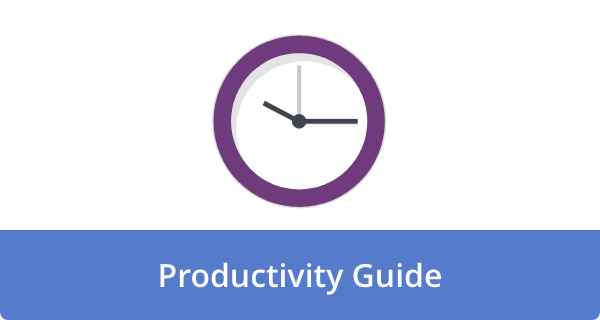

You do not need a 4 a.m. ice bath or a monk’s schedule to win your mornings. You need a routine that you can keep on a Tuesday in Q4, when a customer churns, your kid is sick, and the bank wants signatures. The promise is simple: 45 to 90 minutes that buys you more focus, fewer reactive decisions, and a calmer baseline to lead from. When added to your Calendar, the win is consistency over intensity, with room for life to happen.
What I heard from experts
In researching this, I heard from operators who actually run teams:
- Arianna Huffington, Thrive Global argues your morning starts the night before with a real cutoff and sleep priority.
- Dr.Andrew Huberman, neuroscientist, Stanford recommends morning light and movement to anchor your body’s clock, not maximal workouts.
- Hal Elrod, author of The Miracle Morning champions a small stack of repeatable practices over elaborate rituals.
The shared takeaway: keep it short and scripted, then expand only if compliance stays high for 2 weeks. Tradeoff: a tighter routine means saying no to fun but optional add-ons.
1. Decide your nonnegotiables
Pick 2 to 4 actions you will do every weekday, no matter what. For founders, a proven set includes water, light, movement, and a one-page plan. Deciding this upfront kills decision fatigue at 6 a.m. The value is compounding: repeated small actions wire faster starts and keep you from doom scrolling before cortisol peaks.
2. Script a 30, 60, or 90 plan
Prebuild three versions for different mornings so you still win when time is tight. Example: 30 minutes for chaos days, 60 for normal days, 90 for stretch days. This prevents the all-or-nothing trap and preserves momentum when a meeting moves earlier.
| Length | Blocks | What it looks like |
|---|---|---|
| 30 min | 3 x 10 | Light + water, brisk walk, 1-page plan |
| 60 min | 3 x 20 | Mobility, sunlight walk, deep work block |
| 90 min | 3 x 30 | Strength or yoga, inbox-free review, strategy read |
3. Stack habits to environmental cues
Tie actions to things that already happen. When the kettle clicks, fill your water bottle. After you open the blinds, step outside for 2 minutes of light. Habit stacking lowers the activation energy and raises your retention rate because the cue is already part of your day.
4. Get sunlight and move first
Walk outside for 8 to 12 minutes. If the weather is rough, stand at a bright window and do 20 air squats. Light plus light movement turns on the body’s clock, nudges mood up, and makes coffee work better. You will think clearly by the time you sit.
5. Drink water before caffeine
Start with 12 to 16 ounces of water and a pinch of salt if you sweat at night. Then coffee. Hydration smooths that groggy trough and reduces the second-cup crash. It is boring, it works, and it costs nothing. If you want to go further, add protein to your first meal to stabilize energy.
6. Block one decision that moves the business
Write a single sentence: “If I only do one thing today, it is X.” Then spend 15 to 20 minutes moving it forward with zero tabs open. This is not your whole to-do list. It is a wedge that makes later tasks easier or unnecessary. Cause and effect: an early concrete win reduces firefighting later.
7. Keep your phone on airplane mode until you plan the day
Notifications are someone else’s agenda. Stay offline until you finish your one-page plan or first block. You will feel the urge to check. Let that be the point. The boundary trains your team that mornings are for thinking, not ping ponging.
8. Use a one-page planning loop
On paper or a simple doc, answer four prompts: wins from yesterday, today’s one thing, top three tasks, blockers. Cap it at 5 minutes. Ending with blockers triggers a quick plan to remove friction, like scheduling a 10-minute call or delegating the stuck item. The brevity forces clarity.
9. Put exercise on rails, not on vibes
Choose the next 4 weeks of workouts now and repeat them. Example: Mon push, Wed pull, Fri legs or yoga. Maintain consistency in sets and exercises throughout the month. Predictable programming beats novelty because you do not waste willpower picking routines. When progress is obvious, it makes adherence easier.
10. Precommit with a visible calendar block
Create a recurring morning block titled “CEO time” and guard it like a board meeting. If you have an assistant, empower them to defend it. The signal is cultural. People book around what you protect, and your future self will thank current you for reducing calendar Tetris.
11. Make a 3-item breakfast board
Decide once — and only once — on three default breakfasts that are fast, protein-forward, and portable. Rotate without thinking. For instance: Greek yogurt with berries, eggs with avocado, smoothie with whey and spinach. The specificity eliminates morning choice friction and steadies energy for your 9 a.m.
12. Review and adjust every two weeks
Treat your routine like a product. Every other Friday, score your past 10 weekdays: ask how many mornings you completed at least the 30-minute version? If it is under 7 out of 10, remove an element or shorten its duration. If it is eight or more, upgrade one block by 5 minutes. Feedback loops make consistency inevitable.
13. Design for travel and kid chaos
Have a “hotel kit” ready: a resistance band, a collapsible bottle, a sleep mask, and earplugs. When a toddler wakes up early or a flight is at dawn, switch to your 10-minute micro: 2 minutes of light, 3 minutes of mobility, 3 minutes of journaling, and 2 minutes of breathing. Aim for minimum viable win. You are protecting the identity of someone who shows up.
14. Keep one practice purely for you
Founders give all day. Keep one morning element that has no output metric. Read five pages of fiction, play an instrument for 3 minutes, or stretch with music you love. This is the valve that releases pressure and prevents routines from feeling like another job.
15. Use metrics that reward showing up
Track only two numbers: days completed and minutes spent in the first focus block. Example: 12 of 15 weekdays, average 18 minutes. You will be tempted to track everything. Simpler metrics reinforce the behavior that drives outcomes without turning your morning into a spreadsheet.
16. Build a restart ritual for when you fall off
You will miss days. Make restarting trivial. The next morning, do your 30-minute plan at 70% effort and text a friend “back on.” No guilt download, no catch-up tasks. Treat misses like a bug you fixed, not a personal failure. That stance keeps your identity intact and your routine resilient.
17. Automate the first five minutes at night
Lay out clothes, set the coffee, stage your shoes by the door, and put your notebook open with today crossed out and tomorrow blank. You’re night-you should hand morning-you a runway. This turns motivation into mechanics, which is what you need at 6 a.m. Consistency is mostly logistics.
18. Add a weekly long-form block
Once a week, replace your first focus block with 45 minutes of strategy thinking. Pick a single question, like pricing or hiring sequence, and write until you find one actionable next step. Deep thinking belongs before the world wakes up. Guard it and your future quarters get saner.
19. Keep the routine tech light
You don’t need a new app to get started. A timer, a notebook, and your calendar are all you need. If you love tools, great, but default to the simplest system that works even in airplane mode. Less tech reduces distraction and increases the odds you stick.
20. Celebrate micro progress every Friday
Close the week by writing three quick wins your morning enabled. Maybe you shipped a pricing page, cleared a hiring bottleneck, or finally ran 2 miles without stopping. Recognition cements the habit loop and reminds you why the routine exists in the first place.
Closing
Your mornings do not need to be heroic to be effective. They need to be repeatable under real-world pressure. Start with 30 minutes, pick four nonnegotiables, and protect one early block that moves the business. After two weeks, adjust by small increments. Keep it human, keep it light, keep it yours. Then let the results accumulate while you lead with more calm and fewer knee-jerk decisions.











Howie Jones
My name is Howie and I'm a Customer Success Manager at Calendar. I like to ensure our customers get the best experience using our product. If you have questions email me howie at calendar.com